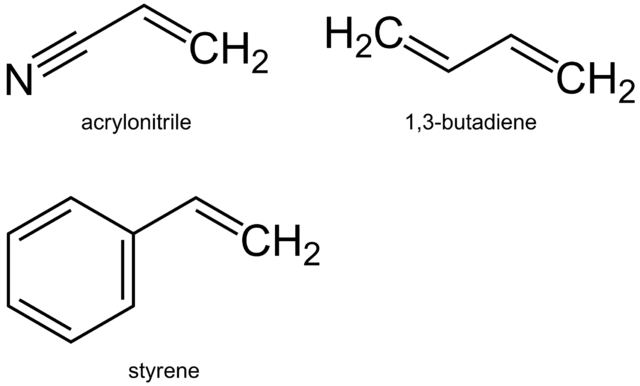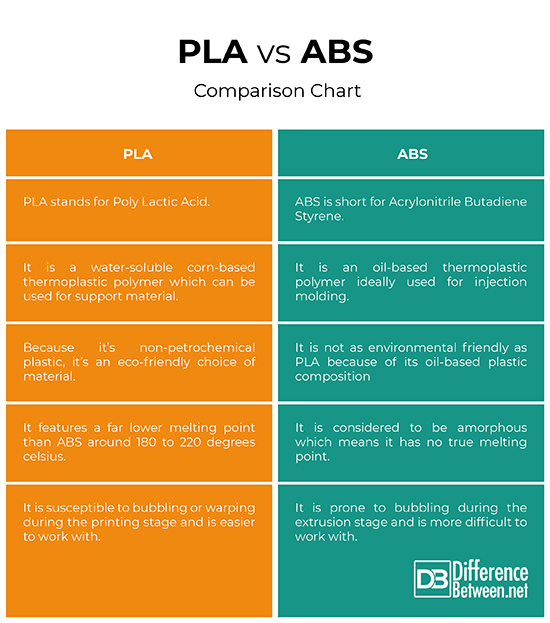Difference Between PLA and ABS
The world has moved way beyond since we first heard the word 3D printing. It’s almost like those childhood fairy tales, when everything was magical and we had full control of it. 3D printing offers the same promise of control over the physical world but in a more technical way. 3D printing has been around for decades now and is still giving regular people powerful tools of design and production. It is an additive fabrication process that can turn digital computer-generated geometry into physical objects using a variety of materials. From those old-school desktop printers to the future of additive manufacturing, 3D printing has come a long way since the late 80s.
Disruptive, game-changing, and groundbreaking are just a few of the many words to better describe the growing technology known as 3D printing. What makes this technology exceptionally unique among other fabrication technologies is that it’s easily accessible. Plus it has made the inconceivable possible by transforming dreams into multidimensional reality. However, 3D printing is more than what meets the eye. Perhaps the most important part of a 3D printing process is to use the right material. And when it comes to materials, PLA and ABS are the two most common types of materials used for 3D printing, mainly FDM 3D printing, with each being uniquely different.
What is PLA?
Poly Lactic Acid, or commonly referred to simply as PLA, is a commonly used corn-based thermoplastic that is used by every FDM 3D printer on the market. It is one of the most common types of 3D printing filament and an easy material to work with. It is a water-soluble thermoplastic which can be used for support material and can be rinsed off with water (not solvents) and reused. As it is manufactured from cornstarch, the lactic acid is polymerized during the process. And the best part, it can be recycled and because it’s non-petrochemical plastic, it’s an eco-friendly choice of material.
What is ABS?
Acrylonitrile Butadiene Styrene, or ABS, is a common thermoplastic polymer ideally used for injection molding. It is an oil-based plastic that is strong and sturdy but it’s not as much eco-friendly as PLA because of its oil-based plastic composition. It has a higher melting point and longer lifespan than PLA, plus it has the advantage of a much higher glass transition temperature. ABS is the preferred choice of materials for parts and objects that are likely to be subjected to temperatures up to 100 degrees celsius to ensure that the printed objects adhere to the platform.
Difference Between PLA and ABS
-
Basic of PLA and ABS
PLA is one of the most common thermoplastic materials used in 3D printing and it is a corn-based biodegradable thermoplastic polymer created from sugar plants such as sugarcane, corn, and tapioca. It can be recycled and because it’s non-petrochemical plastic, it’s an eco-friendly choice of material. ABS, on the other hand, is an oil-based thermoplastic with a much higher glass transition temperature but is not environmental friendly as PLA because of its oil-based plastic composition. Unlike PLA, it can be difficult to work with as well and requires a heated build platform for printing.
-
Melting Point of PLA and ABS
Both PLA and ABS filaments are the most common materials used for 3D printing. However, PLA is harder and flexible than ABS but features a far lower melting point than ABS around 180 to 220 degrees celsius. ABS, on the other hand, is considered to be amorphous which means it has no true melting point. ABS is made by polymerizing styrene and acrylonitrile in the presence of polybutadiene which allows the polymer to soften gradually as temperature rises. PLA exhibits higher friction than ABS making it extremely difficult to extrude.
-
Performance of PLA and ABS
PLA filaments have greater tensile strength but are relatively quite similar in performance as the ABS filaments. PLA has more consistent quality when outputted from the extruder and it does no exude an unpleasant odor. Moreover, it rarely bubbles or warps during the printing stage, making it ideal for more detailed objects. ABS, however, are not recommended for highly detailed designs since it is prone to bubbling during the extrusion stage. Unlike PLA, ABS can also be difficult to work with and it requires a heated build platform, which many at-home printers do not have.
-
Application Areas for PLA and ABS
Both are the preferred choice of materials for FDM printing and are typically similar in cost, but ABS is best suited for applications where strength, thermal stability, and ductility are required. It is used in a variety of ways from industrial applications for extrusion to children’s toys such as Lego bricks to musical instruments. PLA, on the other hand, is easier and safer to use and is also much more brittle than other thermoplastics. PLA plastic is often used for food containers and plastic films for packaging. It is less sturdy than ABS, which makes it better for aesthetic uses rather than mechanical.
PLA vs. ABS: Comparison Chart
Summary of PLA Vs. ABS
Although both PLA and ABS filaments are the most common thermoplastic materials used for FDM 3D printing, each has its own unique properties that lend themselves to either more detailed designs or more durable parts. PLA is easier and safer to use and is also much more brittle than other thermoplastics, but ABS is best suited for applications where strength, thermal stability, and ductility are required. However, PLA is more susceptible to bubbling and warping making it better for aesthetic uses rather than mechanical.
- Difference Between Caucus and Primary - June 18, 2024
- Difference Between PPO and POS - May 30, 2024
- Difference Between RFID and NFC - May 28, 2024
Search DifferenceBetween.net :
Leave a Response
References :
[0]Image credit: https://upload.wikimedia.org/wikipedia/commons/thumb/8/82/ABS_resin_formula.PNG/640px-ABS_resin_formula.PNG
[1]Image credit: https://upload.wikimedia.org/wikipedia/commons/thumb/d/de/Polylactic_acid_%28PLA%29_synthesis_via_intermediate_lactide.png/640px-Polylactic_acid_%28PLA%29_synthesis_via_intermediate_lactide.png
[2]Noorani, Rafiq. 3D Printing: Technology, Applications, and Selection. Boca Raton, Florida: CRC Press, 2017. Print
[3]Horne, Richard and Kalani Kirk Hausman. 3D Printing For Dummies. Hoboken, New Jersey: John Wiley & Sons, 2017. Print
[4]Micallef, Joe. Beginning Design for 3D Printing. New York City: Apress, 2015. Print



